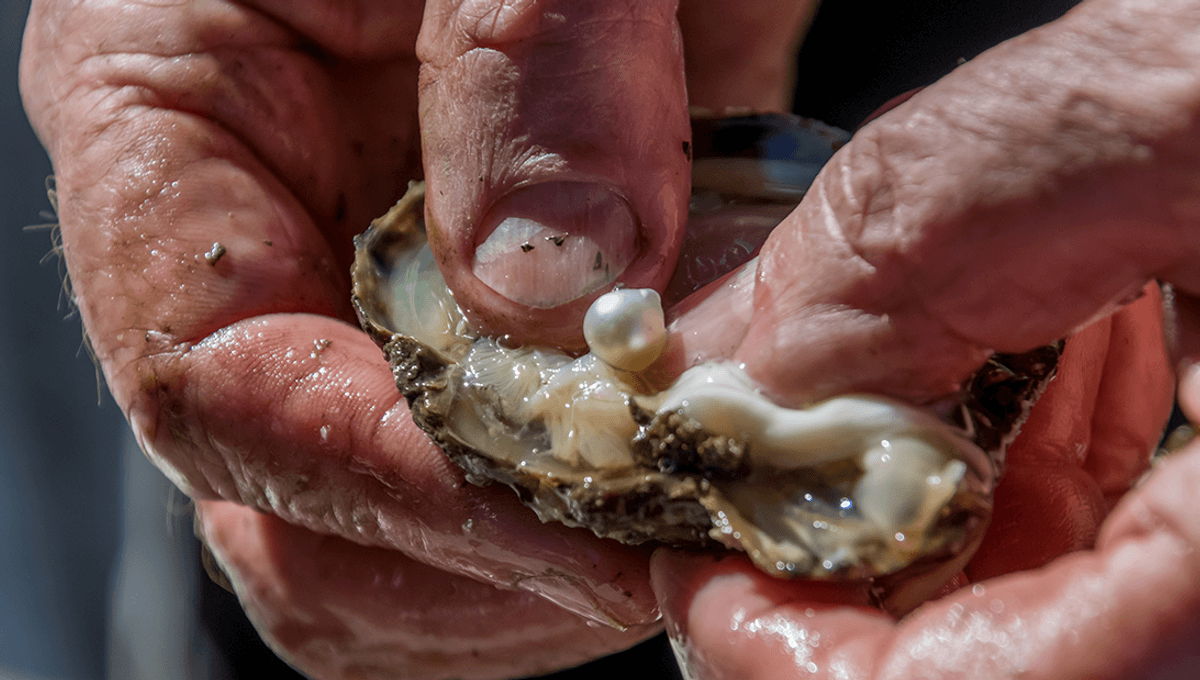
If you’ve ever played 20 Questions, chances are you’ve come across the starting phrase: animal, vegetable, or mineral? But in which category would you put a pearl? Pearls might be the queen of gems and the gem of queens according to Grace Kelly, but what are they technically classed as? Unlike the average gemstone found naturally occurring in Earth deposits, these tiny orbs are made deep in the ocean by a range of shelled sea creatures.
How are pearls formed?
Pearl formation happens when an object – be it a grain of sand, food particle, or parasite – ends up inside the shell of a mollusk. Technically, clams, mussels, and oysters can all make pearls, but the most common kind are made by oysters. Oysters and mussels have very soft bodies so need to protect themselves from sharp, irritating things getting in the way. To do this, they cover the object with layers of calcium carbonate in two different forms.
“Pearl is a word we use for a shiny creation that a mollusk produces. If debris gets stuck in a mollusk and they can’t flush it out, they coat this debris in their own mother of pearl or shell material,” said Gabriela Farfan, environmental mineralogist and Coralyn W. Whitney curator of gems and minerals at the Smithsonian’s National Museum of Natural History, in Smithsonian Magazine.
What are pearls made of?
Pearls are therefore made up of the initial object that irritated the mollusk and then layers of different forms of calcium carbonate together with a substance called conchiolin. Conchiolin is a type of protein that binds together the layers of calcium carbonate within the pearl.
Usually, there are two forms of calcium carbonate within a pearl. The interior of the pearl is formed of columnar calcite or aragonite. As the pearl grows, the outer layers convert to tabular aragonite, or nacre, which is also known as mother-of-pearl. This is the same substance often found on the inside of mussels and other shells and gives the pearls their famous opalescent sheen.
Oysters and mussels are capable of producing pearls in a naturally occurring way, but most commercially available pearls are created in oyster farms where the initial irritating object is a small seed of plastic or glass placed in purposely grown oysters.
Are pearls minerals?
Minerals are naturally occurring solid inorganic substances with a definite chemical composition and an ordered internal structure. Pearls are not considered minerals because their internal structure lacks organized crystals.
Aragonite and calcite found naturally in the Earth do have the needed crystal structure so are considered minerals. However, the main reason pearls are not considered minerals is the conchiolin – this material is made up of protein and, while essential to the formation of the pearl, is a biological material and therefore means that those beautiful shiny pearls are not minerals.
Source Link: Is A Pearl A Mineral?